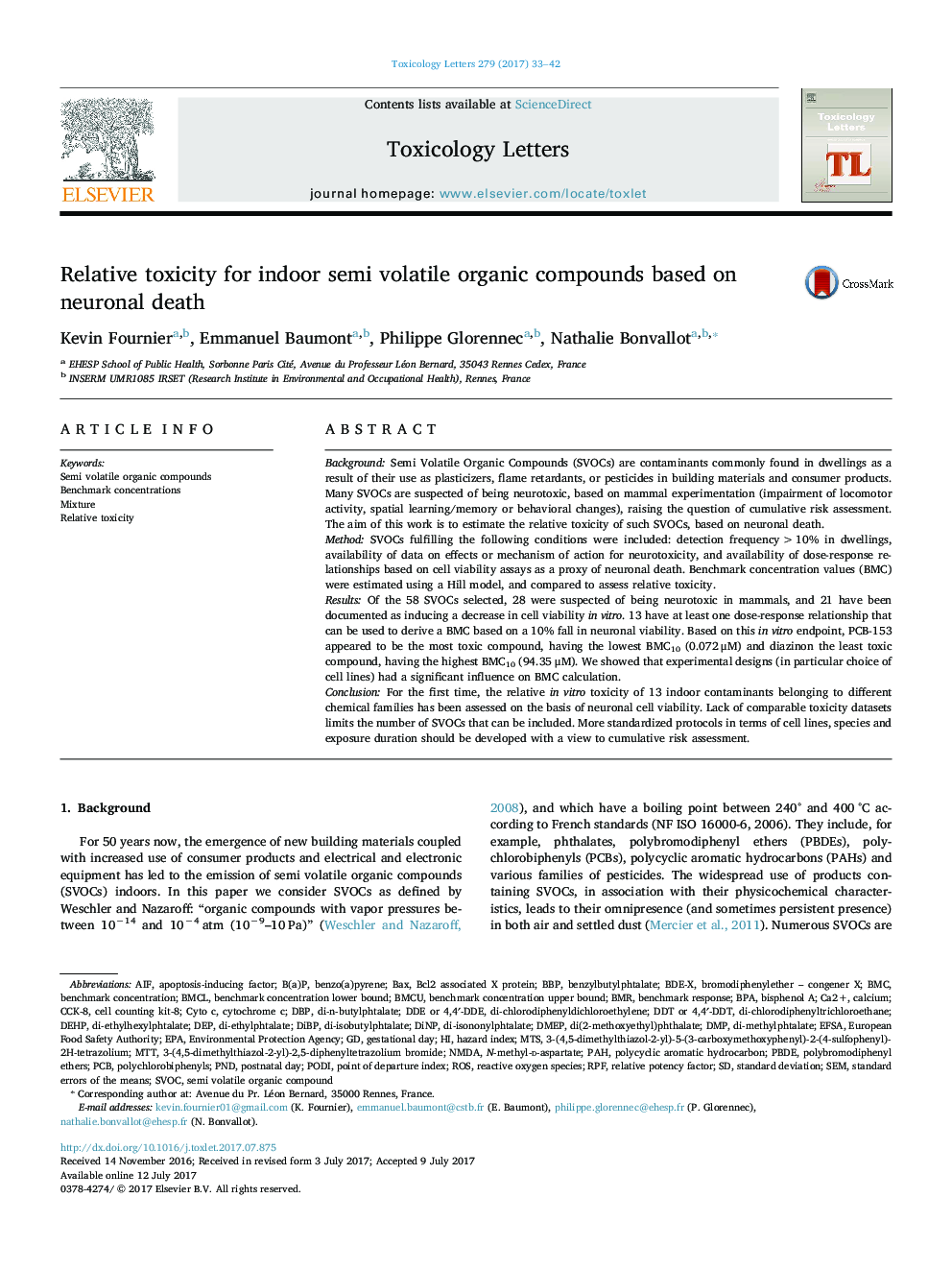| کد مقاله | کد نشریه | سال انتشار | مقاله انگلیسی | نسخه تمام متن |
|---|---|---|---|---|
| 5562064 | 1562594 | 2017 | 10 صفحه PDF | دانلود رایگان |
- Many indoor SVOCs are suspected to be neurotoxic, raising the question of cumulative risk assessment.
- Benchmark concentrations (BMC) have been derived for 13/28 neurotoxic indoor SVOCs.
- Experimental designs had a significant influence on BMC calculation.
- More standardized protocols should be developed with a view to cumulative risk assessment.
BackgroundSemi Volatile Organic Compounds (SVOCs) are contaminants commonly found in dwellings as a result of their use as plasticizers, flame retardants, or pesticides in building materials and consumer products. Many SVOCs are suspected of being neurotoxic, based on mammal experimentation (impairment of locomotor activity, spatial learning/memory or behavioral changes), raising the question of cumulative risk assessment. The aim of this work is to estimate the relative toxicity of such SVOCs, based on neuronal death.MethodSVOCs fulfilling the following conditions were included: detection frequency >10% in dwellings, availability of data on effects or mechanism of action for neurotoxicity, and availability of dose-response relationships based on cell viability assays as a proxy of neuronal death. Benchmark concentration values (BMC) were estimated using a Hill model, and compared to assess relative toxicity.ResultsOf the 58 SVOCs selected, 28 were suspected of being neurotoxic in mammals, and 21 have been documented as inducing a decrease in cell viability in vitro. 13 have at least one dose-response relationship that can be used to derive a BMC based on a 10% fall in neuronal viability. Based on this in vitro endpoint, PCB-153 appeared to be the most toxic compound, having the lowest BMC10 (0.072 μM) and diazinon the least toxic compound, having the highest BMC10 (94.35 μM). We showed that experimental designs (in particular choice of cell lines) had a significant influence on BMC calculation.ConclusionFor the first time, the relative in vitro toxicity of 13 indoor contaminants belonging to different chemical families has been assessed on the basis of neuronal cell viability. Lack of comparable toxicity datasets limits the number of SVOCs that can be included. More standardized protocols in terms of cell lines, species and exposure duration should be developed with a view to cumulative risk assessment.
Journal: Toxicology Letters - Volume 279, 5 September 2017, Pages 33-42
